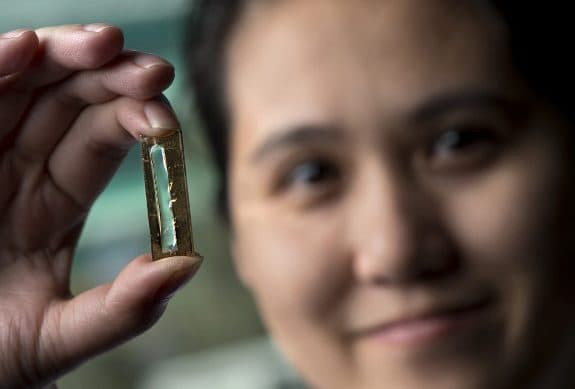UC Irvine Researchers Accidentally Build Long Lasting Rechargeable Batteries
Lithium-ion batteries which we use on our smartphones and tablets can survive around a few thousand recharge cycles. This means on average use we have to replace the batteries every few years. Researchers at the University of California in Irvine have found out a way of getting rid of this problem by accidentally building a new battery out of nanowires that can outlast 2,00,000 recharge cycles without any degradation. The new battery built by UCI chemists lost less 5 percent capacity during the aforementioned number of recharge cycles.

The research started when the UCI researchers led by doctoral candidate Mya Le Thai started studying alternatives for lithium in batteries. They sought the help of nanowires, which are thousands of times thinner than human hair but are highly conductive and posses a large surface area which can facilitate the transfer of electrons. The problem with nanowires is that they are fragile. When they are used in a regular lithium-ion battery they expand, grow brittle and crack. They researchers played around with many different materials to coat the gold nanowire until they came upon manganese dioxide. Once they coated the gold nanowire in manganese dioxide and swapped the lithium ion electrolyte for an electrolyte made out of much thicker Plexiglas like gel they created a new battery that was tested for three months for over 200000 recharge cycles without losing any capacity or damaging the nanowires.
The astonishing fact is that researchers do not yet know as to why their idea worked. Their best guess is that the thicker gel plasticises the metal oxide giving it flexibility thus preventing cracking or corrosion. If they are successful in mass producing their technology then they may be able to create long lasting batteries that can be used not just in our smartphones but also on spacecrafts.
Source: #-Link-Snipped-# via #-Link-Snipped-#

The research started when the UCI researchers led by doctoral candidate Mya Le Thai started studying alternatives for lithium in batteries. They sought the help of nanowires, which are thousands of times thinner than human hair but are highly conductive and posses a large surface area which can facilitate the transfer of electrons. The problem with nanowires is that they are fragile. When they are used in a regular lithium-ion battery they expand, grow brittle and crack. They researchers played around with many different materials to coat the gold nanowire until they came upon manganese dioxide. Once they coated the gold nanowire in manganese dioxide and swapped the lithium ion electrolyte for an electrolyte made out of much thicker Plexiglas like gel they created a new battery that was tested for three months for over 200000 recharge cycles without losing any capacity or damaging the nanowires.
The astonishing fact is that researchers do not yet know as to why their idea worked. Their best guess is that the thicker gel plasticises the metal oxide giving it flexibility thus preventing cracking or corrosion. If they are successful in mass producing their technology then they may be able to create long lasting batteries that can be used not just in our smartphones but also on spacecrafts.
Source: #-Link-Snipped-# via #-Link-Snipped-#
0
